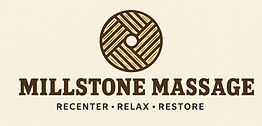How to Communicate with Your Massage Therapist to Get the Massage You Truly Need
- ktcoyne17
- Sep 8
- 4 min read
Updated: Oct 2

Massage therapy is one of the best ways to reduce stress, ease muscle tension, and support overall wellness. But here’s a little secret: the most effective massage sessions don’t just depend on the skill of your therapist—they also rely on clear and honest communication. Every body is unique, and your therapist can customize your session far more effectively if they know what you want, need, and expect.
Think of your massage as a collaborative experience. By speaking up before, during, and even after your session, you help ensure that your massage is exactly what you’re hoping for—whether that’s total relaxation, targeted pain relief, or a mix of both.
Below are some of the best ways to communicate with your massage therapist so you walk out feeling your absolute best.
1. Be Honest About Your Goals
Before your therapist even begins, they’ll likely ask what brought you in. This is your chance to be specific:
Do you want deep relaxation to reduce stress?
Are you experiencing pain or stiffness in your neck, shoulders, or lower back?
Are you an athlete needing targeted recovery work?
Don’t feel shy about saying exactly what you hope to get out of the session. Your therapist has a variety of techniques available, and your answers guide them in creating a customized treatment.
2. Share Health Information
Even if it feels minor, share any relevant health information with your therapist. This could include:
Recent injuries or surgeries
Chronic conditions (like arthritis or fibromyalgia)
Current medications that might affect circulation or sensitivity
Pregnancy (massage is safe in most cases, but techniques are modified)
The more your therapist knows, the safer and more effective your massage will be. They may avoid certain areas, adjust pressure, or choose techniques that better support your body’s needs.
3. Talk About Pressure Preferences
One of the most common miscommunications in massage is about pressure. Some people crave deep, muscle-melting work, while others prefer a gentler, soothing touch. And preferences can even vary across your body—maybe you like firm pressure on your back but lighter work on your arms or calves.
Don’t hesitate to tell your therapist:
“I like deep pressure, but please avoid going too hard on my shoulders.”
“Can you use lighter pressure around my neck?”
And remember, pressure can be adjusted at any point during the massage. If it feels too light or too intense, say something—your therapist won’t be offended.
4. Clarify Areas of Focus
If you have specific trouble spots, let your therapist know before the session begins. For example:
“My lower back has been really sore.”
“Can you spend extra time on my feet?”
“Please avoid my left knee—it’s been bothering me.”
Massage time is limited, so prioritizing the areas you care about most ensures they get the attention they deserve.
5. Give Feedback During the Massage
It’s completely okay to speak up during your session. A few simple words can make a big difference:
“Could you go a little deeper?”
“That spot feels tender—can you ease up a bit?”
“That’s exactly where it hurts, keep working there.”
Most therapists actually appreciate this kind of feedback because it helps them fine-tune their approach.
6. Ask Questions if You’re Unsure
If your therapist suggests a technique you’re unfamiliar with, or if you’re curious about what they’re doing, feel free to ask. Many therapists enjoy explaining their methods and how certain techniques benefit your body. Open dialogue creates trust and helps you feel more comfortable.
7. Respect Boundaries (Yours and Theirs)
Communication is also about comfort and consent. If anything makes you feel uneasy—whether it’s the level of draping, music volume, or room temperature—say so. Your therapist wants you to feel at ease and will gladly make adjustments.
Likewise, respect your therapist’s professional boundaries. If they avoid certain areas for safety or ethical reasons, trust their judgment.
8. Share Feedback After the Session
Once your massage is over, take a moment to reflect. Did it meet your goals? Was there something you’d like different next time? Share this with your therapist. For example:
“I felt so much looser in my shoulders afterward.”
“Next time, can we focus a little more on my legs?”
This helps build a relationship where each session becomes more personalized over time.
9. Don’t Forget Non-Verbal Communication
Your words matter, but so does your body language. If you tense up, shift uncomfortably, or hold your breath, your therapist will often notice. They may check in with you if they sense discomfort, but you can also combine non-verbal cues with verbal feedback for the clearest communication.
10. Remember: It’s Your Massage
At the end of the day, your massage is about you—your comfort, your wellness, your goals. Your therapist is a skilled professional, but they aren’t a mind reader. Speaking up ensures you receive the massage you need most, whether that’s a soothing escape from stress, relief from chronic pain, or a combination of both.
Final Thoughts
Effective communication with your massage therapist transforms a good session into a great one. Be clear about your goals, honest about your body, and willing to share feedback throughout the process. By creating an open dialogue, you give your therapist the tools they need to provide the most beneficial, customized experience possible.
So the next time you schedule a massage, remember: a little communication goes a long way toward getting the results you truly want.




Comments